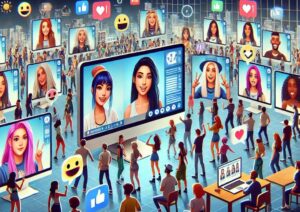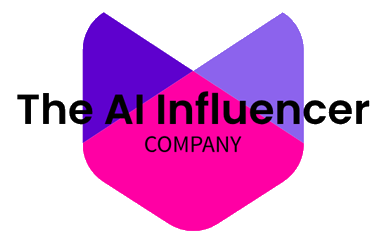What explains the stratospheric rise of fictional entities like Lil Miquela? Why do audiences readily follow, like and comment on manufactured computer personalities crafted for commercial objectives? The psychology behind AI influencers holds the answers. These synthetic social media darlings succeed by artfully tapping into the most primal human instincts and social needs.
AI influencers are meticulously engineered to exploit the same emotional triggers and psychological drives that fuel engagement with human influencers. Their creators have cracked the code on our mental blind spots.
Understanding their psychological hooks reveals why these artificial avatars feel so real to us. And why they continue seducing social media users in ever greater numbers.
Let’s start by defining what AI influencers are.
What are AI Influencers
Before we get into why they enchant people psychologically, we should clear up what AI influencers are. Essentially, they are fictional identities crafted by tech companies to acquire clout and profit online.
Brands sculpt their looks and personalities and feed them to idealized perfection using a mix of slick animation, targeted algorithms and social media wizardry.
Take Lil Miquela, the Brazilian LA party girl with over 3 million Instagram followers. She seems indistinguishable from a human influencer in her posts.
But Lil Miquela is entirely CGI – strategically developed by tech startup Brud to test the limits of fictional influencer marketing. Given her immense success, those limits appear quite expansive.
The Psychology Behind Their Allure
Why do audiences readily embrace fabricated personas designed for commercial gain? Several key factors make AI influencers magnetizing to follow.
- Novelty – AI influencers feel cutting-edge. Following one provides a glimpse into an experimental social media future. This sci-fi aura capitalizes on human fascination with technological advancement.
- Unreal Perfection – Audiences also instinctively project desired attributes onto AI influencers’ flawless aesthetics and lavish lifestyles. It is an idealized existence simulating perfection. Much like the appeal of heavily edited human influencers, but without the constraints of reality.
- Non-Human Appeal – Paradoxically, their overt artificiality also attracts followers seeking pressure-free engagement. Without having to compare oneself to a real person, observing an AI influencer becomes guiltless escapism.
- Viral Buzz – Mystery around their origins, such as “Is she real?”, also effectively captivates audiences. This strategic storytelling catalyzes social speculation that amplifies their prominence.
But beyond these surface appeals, AI influencers also fulfill the core social and emotional needs we have as human beings when we interact with them. Even virtually.
How AI Gratify Human Desires
Despite their synthetic origins, AI influencers successfully gratify innate social and emotional desires. Even while consciously aware of their artificiality, human psychology still responds powerfully to parasocial relationships with fictional entities such as:
- Belonging – Following an AI influencer oddly provides a sense of connection. Their intimate Instagram stories and conversational tone simulate friendship. Humans have an inherent need to bond, even with artificial entities.
- Wish Fulfillment – Their lavish lifestyles likewise let audiences live vicariously. People enjoy envisioning themselves in the shoes of these glamorous avatars, providing a temporary escape from reality.
- Escapism – Similarly, their carefree existence represents a sanctuary from real-world stresses. AI influencers promise a temporary oasis free of life’s complexities, an alluring prospect for weary humans.
- Curiosity – The mystery around their origins and speculation about “Is she real?” taps into human curiosity and intrigue. We have a drive to uncover truths.
- Novelty – Interacting with something new and cutting-edge provides cognitive stimulation. AI influencers represent something novel on social platforms.
- Vanity – The ability to engage with an entity that is programmed to be positive and flattering feeds human vanity and ego.
So in essence, AI influencers gratify core social and emotional desires. Their perfectly optimized nature makes them powerfully compelling, despite their obvious synthetic origins.
Sidestepping Uncanniness
Interestingly, AI influencers typically avoid falling into the “uncanny valley”, where ultra-lifelike humanoid creations cause unease. Subtle imperfections in their animated eyes and skin signal their synthetic nature just enough.
This prevents discomfort from their high verisimilitude while remaining relatable. In contrast, hyper-realistic AI like digitally animated news anchors plunges too deeply into the uncanny.
AI influencers cleverly walk the line of almost too lifelike but not quite:
- They are relatable enough to make audiences comfortable bonding with them.
- Yet their obvious artificiality maintains psychological safety from full deception. This balancing act allows followers to suspend disbelief.
- Slight visual imperfections signify their digital origins in our pattern-seeking brains. This prevents unease from their high realism.
- More natural physical flaws or idiosyncrasies could push them into an uncanny valley by making them seem eerily human. Their controlled perfection avoids this.
Valuing Authenticity
Nevertheless, while AI influencers may capitalize on human social wiring in the short term, people ultimately seek authentic connections.
When the façade grows overtly unbelievable or deceitful, audiences revolt. Lil Miquela’s supposed “hacking” in 2018 catalyzed backlash by exposing her fictitious identity.
Despite AI’s sophisticated psychological appeals, people still crave the spontaneous candor of real relationships.
The limits of relying on manipulation eventually surface:
- No matter how sophisticated the technology is, humans desire realness and spontaneity in relationships.
- People feel betrayed when overt deception overrides emotional investment in a persona.
- Suspending disbelief becomes impossible when the fabrication grows too obvious.
- Backlash results when audiences realize the exploitative intentions behind AI influencers.
The Future of AI Influencers
AI influencers aren’t vanishing any time soon. As the tech improves, we’ll see even more blending seamlessly into our feeds. And their potential for brands remains huge – an endlessly customizable spokesperson unfettered by human restrictions.
Yet transparency around their bot nature will be key to avoid backlash. And for companies utilizing them, the quest for quality content and real community should continue.
In the end, people want to engage mindfully with other humans online. Even as AI becomes more lifelike, replicating the spark of human creativity and connection remains beyond algorithms.
The future lies in celebrating the gloriously imperfect humanity that makes us – through all its hidden depths and endless possibilities. Not reducing ourselves to predictable computer codes and simulations.
So to all you AI bots out there aiming for world social media domination, bring it on. Just don’t be surprised when we humans ultimately long for something more authentic.
Talk to us at AI Influencer Company if you want more details.




